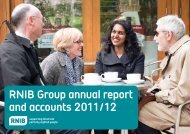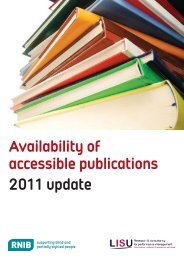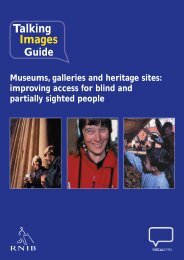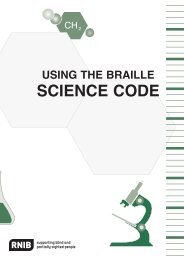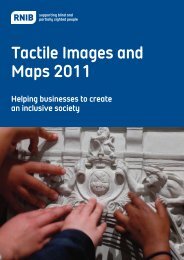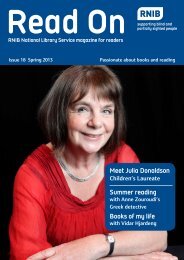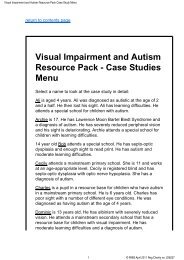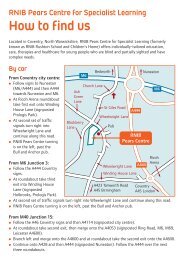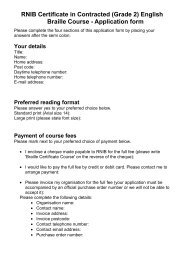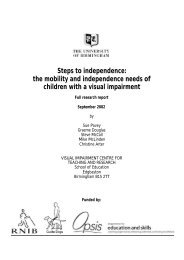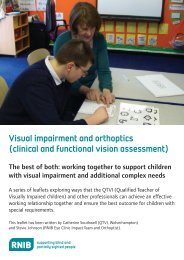Download Complete Report (PDF 1.19mb) - RNIB
Download Complete Report (PDF 1.19mb) - RNIB
Download Complete Report (PDF 1.19mb) - RNIB
Create successful ePaper yourself
Turn your PDF publications into a flip-book with our unique Google optimized e-Paper software.
Executive summary<br />
1. Aims<br />
The research questions addressed in the project were:<br />
1. What are the core functional requirements of blind and partially sighted people<br />
from consumer digital radio equipment?<br />
2. What are the design considerations required to make the more advanced functions<br />
of current and emerging consumer digital radio equipment accessible to blind and<br />
partially sighted people?<br />
3. What are the accessibility and usability priorities for accessible and easy to use<br />
consumer digital radio equipment for blind and partially sighted people?<br />
4. To what extent (and how) are accessibility considerations built into manufacturers’<br />
product design and development processes of consumer digital radio equipment?<br />
Within this context, how feasible is it for manufacturers to develop consumer<br />
digital radio equipment that is accessible to blind and partially sighted people?<br />
2. Methods<br />
To address the above research questions, the project involved both consumer and<br />
industry research.<br />
The consumer research comprised two activities:<br />
1. Qualitative in-depth research in the homes of 38 Digital Audio Broadcasting (DAB)<br />
radio consumers around the UK (24 blind and partially sighted consumers, 3<br />
consumers with dyslexia, 3 with reduced dexterity, and 8 ‘sighted control’<br />
participants). Participants were interviewed and observed using familiar and<br />
unfamiliar DAB equipment during these sessions. The goal of this activity was to<br />
gain an in-depth understanding of the needs of blind and partially sighted people<br />
in terms of maximising the accessibility and usability of consumer digital radio<br />
equipment. In addition, the research aimed to assess how the digital radio<br />
equipment needs of blind and partially sighted people compared with those of<br />
sighted people, people with dyslexia and people with dexterity impairments.<br />
4



